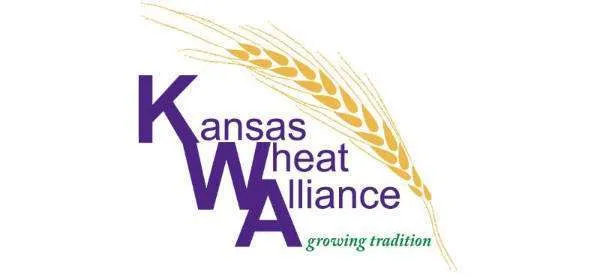This is day 10 of the Kansas Wheat Harvest Reports, brought to you by the Kansas Wheat Commission, Kansas Association of Wheat Growers and the Kansas Grain and Feed Association.
Sporadic sprinkles are keeping many Kansas wheat farmers on edge as they wait for moisture levels to decrease enough to get back into the combine. Elevators are taking in loads; however, as farmers who can are continuing the slow, but productive, march of the 2021 Kansas wheat harvest.
Kris Allen, general manager of Randall Farmers Coop Union, said the wheat harvest weather has been a little frustrating with spotty, small showers that are keeping farmers in a get-up-and-go-then-get-shut-down pattern. She expected farmers in Jewell County to be back in the fields Tuesday late afternoon/early evening.
With less overall acres planted this year, wheat harvest started in the area on June 22, but with the weather delays, harvest is only about 20 percent complete thus far. Test weights have stayed steady from 60 to 62 pounds per bushel and protein is averaging from 10 to 11 percent. Moisture is ranging from 11 to 12 percent, depending on if it rained the night before. Allen reported no disease or dockage issues.
Further west, Matt Overturf, executive vice president – grain marketing with Skyland Grain in Johnson City, reported area farmers are pleasantly surprised with this year’s wheat crop, especially after the wheat looked particularly poor following dry weather in April in early May. Overall, harvest in the area is a week to 10 days behind normal and won’t be wrapped up until July 15, unless the weather turns hot and dry.
Fields were ready to cut about four days before harvest really began, but there were not any cutters in the area. Now that custom crews have arrived, harvest is progressing, but cooler temperatures in the 80s and scattered showers mean harvest is not progressing as quickly as other years. Despite the delays, farmers needed the moisture for fall crops.
Although this week has been cool and damp, farmers have been cutting almost every day but are pushing moisture limits. Elevator locations in Johnson and north are about 25 percent complete, Satanta/Moscow location about two-thirds complete, Greensburg about half complete, and Cunningham about 95 percent complete. In comparison, the Lydia location just got going on Monday.
Yields are highly variable with some poor fields and some decent fields, depending on where rain was received. Overturf said protein is all over the place — some areas below average and others above average. Test weights are averaging about 60 pounds per bushel. While this year is highly variable in terms of yield and protein content, with highs and lows, the final crop for the area will likely be right around average.
Michael Wisner, Vice President – Grain for Garden City Co-Op, Inc, echoed Monday’s rains were spotty, but noted farmers are cutting throughout their coverage area where they can. Garden City Co-Op covers from Ulysses in the south to Shields in the north — roughly 100 miles north to south — and from Lakin in the west to Charleston in the east — roughly 60 miles east to west.
While harvest started on June 17, Wisner estimated harvest is progressing at roughly 70 percent of a normal pace and about halfway complete. The recent sporadic rains have some farmers antsy to cut, which means some loads coming in with higher moisture content. Overall, the moisture average is still pretty good in in the upper 11 percent. Test weights started out excellent between 62 and 64 pounds per bushel, but after the rain have dropped slightly to 59 to 62 pounds per bushel.
Yields and protein have varied widely, telling the tale of two very different crops. In the southern range of their territory, Wisner reported a lack of moisture has meant yields are ranging in the 40s, but proteins around 12 percent due to the stress on the crop. Around Garden City, yields are averaging around 60 bushels per acre. Further north in Dighton, yields are even higher, averaging in the mid-60s. In these locations, protein levels are lower, but still are variable.
Overall, Wisner expected this year’s wheat harvest to be slightly above the five-year average and significantly better than last year’s drought-stricken crop that had lower acreage due to farmer crop rotations. Mycotoxin testing has not shown any issues and harvest is continuing even with the weather. This year may just be a little longer harvest season than normal.
The 2021 Harvest Report is brought to you by the Kansas Wheat Commission, Kansas Association of Wheat Growers and the Kansas Grain and Feed Association. To follow along with harvest updates on Twitter, use #wheatharvest21. Tag us at @kansaswheat on Facebook, Instagram and Twitter to share your harvest story and photos.
###
Written by Julia Debes for Kansas Wheat




